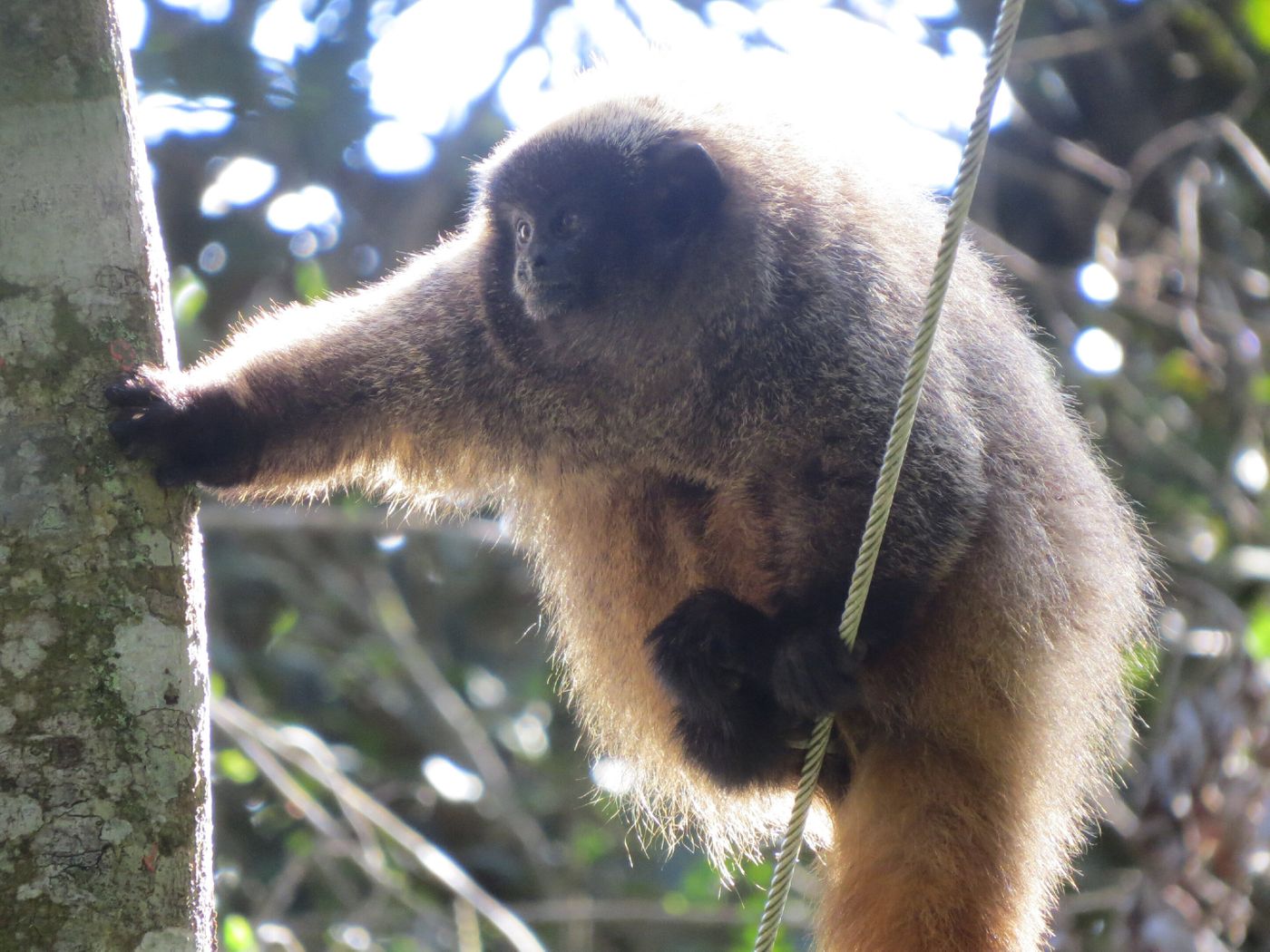Researchers Probe the Complex Predatory Warning Calls of Titi Monkeys
Titi monkeys are social animals, and so it should come as no surprise to anyone that they enjoy communicating with one another. But according to new research published just this past week in the journal Science Advances, Titi monkey communication techniques could be a lot more complicated than initially thought.
Image Credit: Geoffrey Mesbahi
The revelation became evident after a team of researchers from the University of Neuchâtel and the University of St Andrews collaborated in a study involving Titi monkeys in their natural habitat in South America. There, the researchers observed a particularly advanced predator alert system in which the Titi monkeys alerted others in their group to potential dangers.
Related: These sneaky monkeys scavenge pre-cracked nuts left behind by larger predators
Titi monkeys certainly aren’t the only animals in existence that can alert others in their group to nearby predators, but they appear to have several different calls that distinguish the type of predator roaming around. With that in mind, one kind of call might alert others to a nearby flying predator, while another call might alert others to a nearby land-based predator.
Believe it or not, even this predatory alert system methodology isn’t unique to Titi monkeys, but while researching the animals in Brazil, the researchers happened upon something that is: dynamic predatory alert calls that change depending on the behavior of the predator at hand.
More specifically, if a flying predator would land on the ground, then the Titi monkeys adapted their call to alert their group. Likewise, when a land-based predator would climb into the trees up above, they’d have another specific call for that instance. These calls varied from the traditional calls that the Titi monkeys would use to distinguish flying or land-based predators and adds a new dimension to our understanding of the animals’ communication methods.
Related: Does hotter weather make predatory animals hunt more?
To study these highly-specialized warning calls, the researchers deployed decoy predators in the wilderness and recorded the Titi monkeys as they responded to the threat(s). To prevent false positives, the researchers paid particular attention to the monkeys’ attention as they made their calls to others and looked to see how those listening would respond.
Based on the warning calls the researchers observed, and the responses of those that listened, the researchers determined that specific warning calls may contain hidden messages about the threat at hand, allowing nearby Titi monkeys to take the proper action to survive. If true, this would mean that Titi monkeys have developed an advanced communication system, and developing a better understanding of their methods could have implications for similar alert systems in other animal species.
Researchers will undoubtedly continue to study Titi monkeys and their unique warning calls with the hope of understanding their communication systems better. With a little luck, perhaps they’ll catch some mundane detail.
Source: Phys.org, Science Advances









